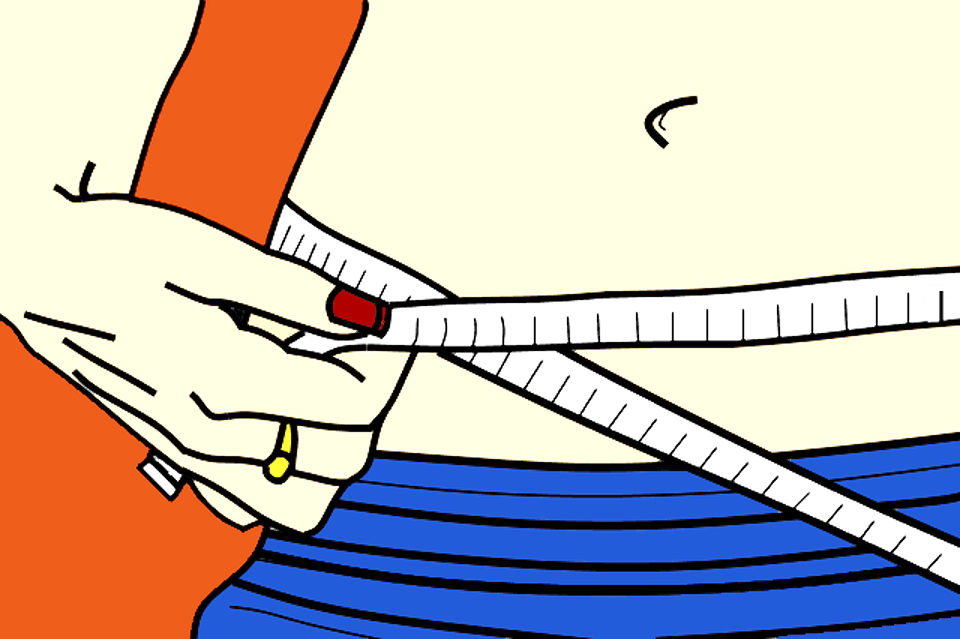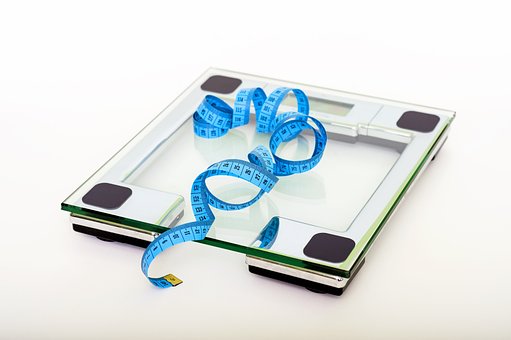
Macro calculator basics: what are macros?
First, you know more than you think. Macros are abbreviations for the word macronutrient and refer to the three main groups of nutrients that humans need.
- Fats
- Carbohydrates
- Protein
To lose body fat, you need to create a calorie deficit by eating fewer calories than you’re burning each day. To maintain your weight, you need to eat the same number of calories that you’re burning each day. To gain weight safely, you need to eat more calories than you’re burning each day.
Weight loss calculator: what’s the difference between calories and macros?
The key to most successful diets is reducing the number of calories consumed each day. This has been proven to work for many people. However, it is not only the quantity of food that you eat each day that matters, but also the quality.
On a CICO (calories in, calories out) diet, whether you eat 20 calories of kale or 20 calories of chocolate, your body will process them in the same way. This is an extreme example, but it shows how the diet works.
In other words, you could theoretically survive on a “junk food” diet if you were only concerned with counting calories, but you would probably end up being deficient in protein and eating more fat than you need to.
A recent study published in the Engl J Med found that both the quality and quantity of the food you eat are important for losing fat and maintaining good health. By tracking your macros, you can ensure you’re not only eating nutrient-rich foods, but also eating them in the appropriate amounts for your body and your training needs.
You can improve your diet by keeping track of the carbohydrates, fats, and proteins you consume and making sure they are in balance.
This can help you balance your nutrition between healthy foods and “fun” foods. For example, if you want a white chocolate mini-magnum, you can add it to your daily macro allowance and plan the rest of your meals around it.
Why Should You Follow a Macro Diet for Weight Loss?
the only way to lose weight is to eat fewer calories than you expend in a day
The food you consume can determine how easy or difficult it is to lose weight.
Additionally, the quality of your choices can have a significant impact on body composition – how much body fat and muscle mass you lose or gain during the process.
Macronutrients are nutrients that are required in large quantities by organisms and include proteins, carbohydrates, and fats. They can solve concerns all at once.
Macros are your calories from food grouped by nutrients: protein, fat, and carbs. Each of these nutrients has different health benefits and provides a different number of calories (protein = 4 calories per gram, carbs = 4 calories per gram, and fat = 9 calories per gram).
Weight loss can be achieved by counting macros and having a good macronutrient ratio. This can help control appetite, support energy levels, lose more body fat and protect lean mass.
A macro diet is more effective than calorie control alone for losing fat, building muscle, and achieving better results.
How to calculate your macros using a macro calculator
Step 1. Work out your Basal Metabolic Rate (BMR)
The number of calories your body burns in a day without you doing anything is your BMR.
To find your BMR, use the following Harris-Benedict equation:
The formula for BMR is 655 + (4.35 x weight in pounds) + (4.7 x height in inches) – (4.7 x age).
So, for example, a 128-pound, 5 foot 2, 33-year-old woman would do:
Adding 655 to the result of 4.35 multiplied by 128 and adding the result of 4.7 multiplied by 62, then subtracting the result of 4.7 multiplied by 33 equals 1348.1.
1348.1 would be her BMR.
Step 2. Decide your activity level
Then, to find out your exact ratios based on your daily activity you multiply your BMR by your average activity level based on the following categories:
Little or no exercise: 1.2
It is recommended that you do some light exercise a few times a week in order to stay healthy.
Moderate exercise 3-5 times a week: 1.55
Heavy exercise 6-7 times per week: 1.725
The woman’s BMR would be 1348.1 if she cycled to work three times a week and attended two yoga classes. She would be classed as a moderate exercise so would multiply 1348.1 (BMR) x 1.55 (activity level) = 2089.5.
After she subtracts her BMR from her caloric needs, the number she is left with is the amount of calories she would eat in a day.
Step 3. Choose your macro split
If you’re keen to stay lean while adding muscle, Women’s Health suggests splitting your daily calories into a macronutrient split of:
40% protein
30% carbohydrates
30% fat
This split provides gives you the right amount of carbohydrates to fuel your workouts, enough protein to build and repair muscle, and healthy fats to maintain optimal hormone production- which is key for staying lean.
Step 4. Work out how many grams of each macro you need to eat
Macronutrients are not all the same. Your body gets 4 calories of energy for every gram of protein and carbohydrate, while fat provides 9 calories per gram.
To calculate how many grams of each macronutrient you need to consume daily, multiply your total daily calorie intake by 0.4 for protein, 0.3 for carbohydrates, and 0.9 for fat. Then, divide the protein and carbohydrate totals by 4, and the fat total by 9. The resulting figures represent the number of grams of each macronutrient you should eat daily.
Here is an example of an 1800 calorie diet that has a 40% protein, 30% carbohydrate, and 30% fat ratio.
Protein = 1800 x 0.4 = 720/4 = 180g
Carbohydrates = 1800 x 0.3 = 540/4 = 135g
Fat = 1800 x 0.3 = 540/9= 60g
Step 5. Make it work for you
You don’t have to find meal prep to be a total drag. You can make it easy on yourself by cooking a protein, carbohydrate, and fat source all at once and then storing them in containers for the next few days. For example, you could roast a chicken, cook some quinoa, and add some avocado. This meal hits each macro, keeps you full, and sounds really delicious.
You can add Greek yogurt and peanut butter to your morning oats to get some protein and healthy fats in your system first thing in the morning.
If you want to be sure you’re sticking to your diet, using a food diary app to track your intake of each macronutrient can be helpful. MyFitnessPal is a good option for this, as it lets you know how much of each macronutrient you’re consuming each day and how much you have left to eat.
You can still have your favorite foods even when trying to eat healthy by monitoring your macronutrients. If you want a chocolate or an extra scoop of porridge one morning, you can still have it and just adjust the rest of your food for the day accordingly.
It’s an easy approach to keep you feeling happy and hitting your goals without sacrificing the occasional treats that keep you sane and ticking over. This approach allows you to enjoy occasional treats while still achieving your happiness and goals.
Counting Macros for Weight Loss
Although knowing your macros is important, it is not the only thing you need to do to be successful. You also need to carefully plan your meals so that they include healthy foods that fit within your macro goals.
How Many Carbs Do You Need to Lose Weight?
The US Dietary Guidelines recommend that carbohydrates make up 45% to 65% of total calorie intake, but other popular diets recommend eating as little as 20g of carbohydrates per day.
Is there any scientific evidence to support the claim that reducing carbohydrate intake can help with weight loss? And if so, what is the recommended intake of carbohydrates per day?
So, the question is not whether or not eating too many carbs will make you fat. The question is whether or not eating fewer carbs can promote more body fat loss during a calorie deficit. And whether or not low carb diets offer specific advantages over other macro diets for weight loss.
Carbohydrates come from anything that grows out of the ground, including fruits and vegetables. They contribute fiber to the diet and are the body’s quickest and most efficient source of fuel. They are the only macro that is able to readily supply energy to the brain.
Complex carbohydrates are important not only for energy levels, but also for helping muscles recover, regulating mood and self-control, and increasing endurance and strength. Without enough complex carbs in the diet, people can become irritable and unfocused, and may experience issues with blood sugar control.
If you are not very active, you will not need as many carbs as someone who is very active.
How Much Protein Do You Need to Lose Weight?
Protein is the most unique macronutrient because it is not a preferred source of energy and is the least likely to be stored as body fat. Protein also helps maintain lean muscle mass, takes more energy to digest (more thermogenic than the other macros), and is thought to help control hunger and reduce cravings.
Further research suggests that a higher protein intake may promote more weight loss, but the amount of protein you need is still widely debated. The US Dietary Guidelines recommend 0.36 to 0.45 grams per pound of body weight, while others argue this amount is based on getting minimum adequate needs for the general population and does not take into account differences in body composition and fitness needs.
Some studies suggest that a minimum daily intake of protein should be 0.45 to 0.55 grams per pound of body weight. Other studies argue that higher protein intake (as much as 0.6 to 0.72 grams per pound) can lead to decreases in appetite and better weight management overall. Furthermore, studies of athletes who are cutting calories suggest that they should consume as much as 1 to 1.5 grams of protein per pound to minimize their loss of lean mass.
In general, science says that you need 0.6 to 1.0 grams of protein per pound of body weight, along with enough calories, to build lean muscle while cutting back on calories.
Some people argue that eating more than the recommended 0.8 grams of protein per pound does not have any additional benefits. However, there is no evidence to suggest that eating more protein is harmful.
How Much Fat Should You Eat to Lose Weight?
Dietary fat is essential for good health, but it is also easy to consume too many calories from fat.
How much fat you consume per day to lose weight depends on the individual. Some people metabolize fat better and do well on diets with more fat, while others prefer higher intakes of carbohydrates – this is partly determined by how active you are and how much lean muscle mass you have.
Most people should keep their fat intake to around 20-30% of their calories to maintain good health and lose weight effectively.
What is the best macro ratio for fat loss and muscle gain?
There is not one specific answer to this question, it will take some adjusting to find what works best for you.
Most experts agree that the key to muscle gain and preventing loss of muscle mass is a higher protein intake. A great way to ensure you’re losing fat and building muscle is to pair a protein-focused macro diet with resistance training.
The American College of Sports Medicine warns that people who want to bulk up should consume 1.2-1.7 grams of protein per kilogram of their body weight every day, which is equivalent to 0.5 to 0.8 grams per pound.
The Verdict
How many macros you need can vary depending on your individual goals, activity level, age, health, genetics, and much more.
If you want to lose weight, it is generally recommended that you eat a moderate-fat diet (20-30% of your calories should come from fat), moderate amounts of carbohydrates (30-40% of your calories should come from carbs), and a high protein diet (25-35% of your calories should come from protein).
If you’re new to dieting, it can help to take a gradual approach. Making big changes to your carbohydrate or protein intake all at once can be tough to manage at first. So start slowly and work your way up to your desired macro goals.
You can make sure you are achieving your goals by holding yourself accountable, practicing flexible dieting, and using a macro-friendly tracking app.
Hard work like counting macros is no longer your problem with this app! It does it for you automatically as you log food, and there’s a searchable database of millions of food items so you can get a handle on your intake even without a nutrition label.














